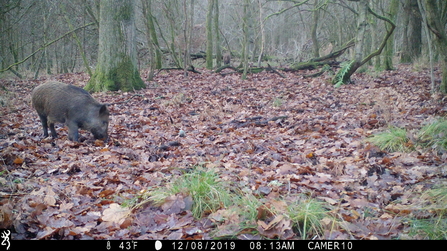Citizen science, a term used for projects when members of the public are involved in scientific research, has a long history within wildlife recording. Citizen science approaches have been particularly successful for long-term and large-scale bird monitoring, with organisations such as the BTO and RSPB engaging many thousands of people in garden bird and breeding bird surveys. These types of projects work well, as the daytime activity of many bird species makes them easier to spot. Mammals, on the other hand, can often be much more elusive, coming out at night, in small numbers and often deliberately avoiding human presence.
MammalWeb: citizen science in action
Due to these issues, the use of camera traps for mammal monitoring has grown massively in popularity in recent years. Camera traps are remotely activated cameras that can be left outside to record animal activity. They are triggered when an animal moves in front of them, causing them to take a photo, a series of photos, or a short video. Along with the photos or video, the date and time of trigger is recorded. This provides us with a record of the species at that location and at that time. This information is useful and can tell us all sorts of information, such as which species live in that area, how they interact, and what their activity patterns are.
Camera traps can be a very efficient way of gathering lots of information on a range of mammal species as they can be left in place for days, or even weeks, at a time and they are relatively straightforward to set up. However, in order to monitor mammals at a large scale - across a country or continent - data is needed from a large number of locations, covering a range of habitats. This makes it very difficult for an individual or small organisation to undertake such monitoring, as they would have to spend much of their time travelling around to set up cameras in different locations. As a solution to this problem, the MammalWeb project is engaging members of the public from all over the UK and inviting them to upload camera trap footage that they have collected. This allows us much greater coverage than would otherwise be possible.
Once camera trap footage has been collected it also needs to be classified, and all species present in the footage identified. This can be a very time-consuming process, as a single camera trap may collect thousands of photos in just a few weeks. MammalWeb also invites participants to view and classify camera trap footage. This can be footage that they themselves have uploaded, or that has been uploaded by other individuals or organisations in need of assistance with classification of camera trap footage, so you don’t need to have your own camera trap to be able to participate in the project.

Although MammalWeb has been running for more than six years, we have deliberately extended our coverage relatively slowly, taking time to ensure that our systems were scalable. We are now confident in our systems and ready to expand to greater coverage – especially across the UK. During the "30 days wild" campaign, we are appealing for the participation of anyone with the capacity to help – either by deploying camera traps, or by helping to classify the resultant images.
If you are interested in taking part, please go to www.mammalweb.org. If you have any questions that aren't answered on the site, you can email us at info@mammalweb.org.

